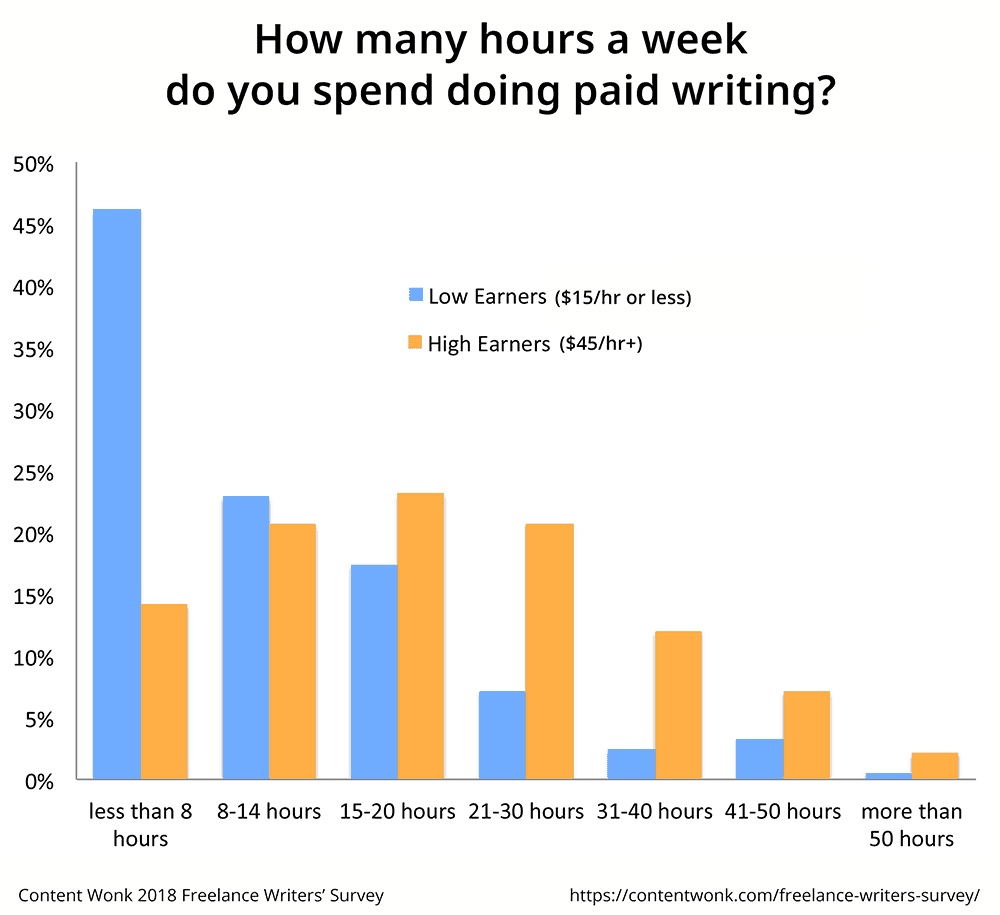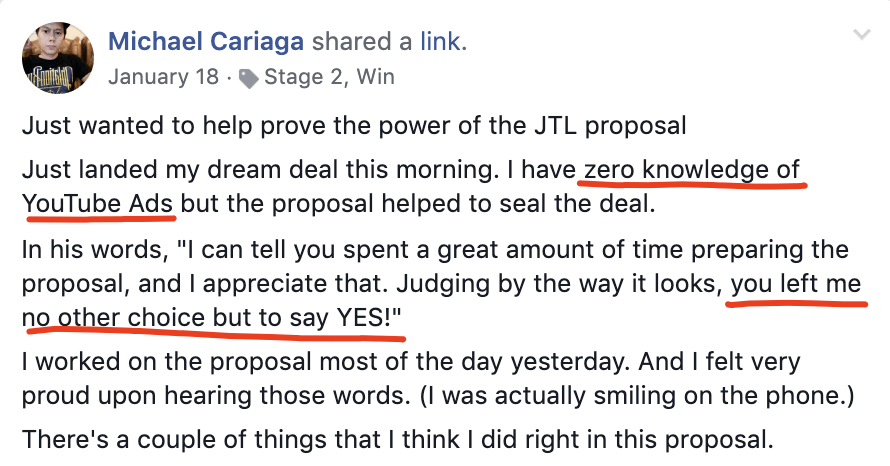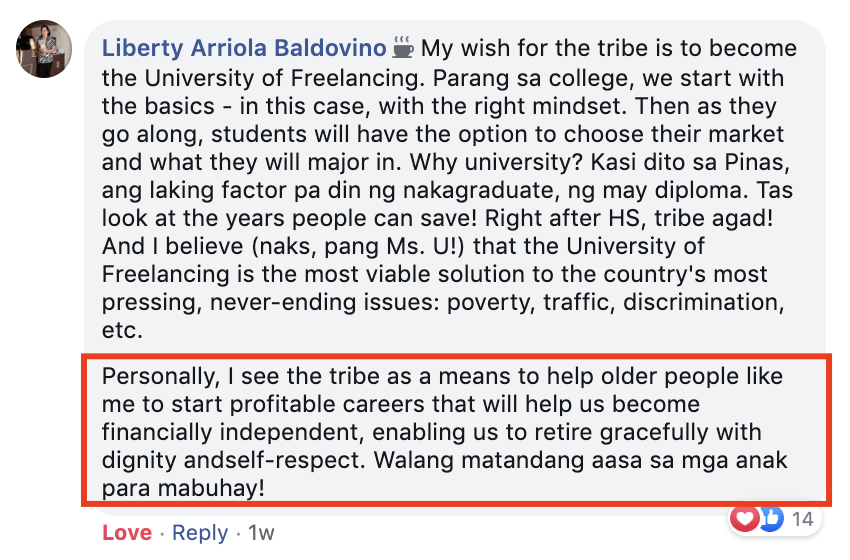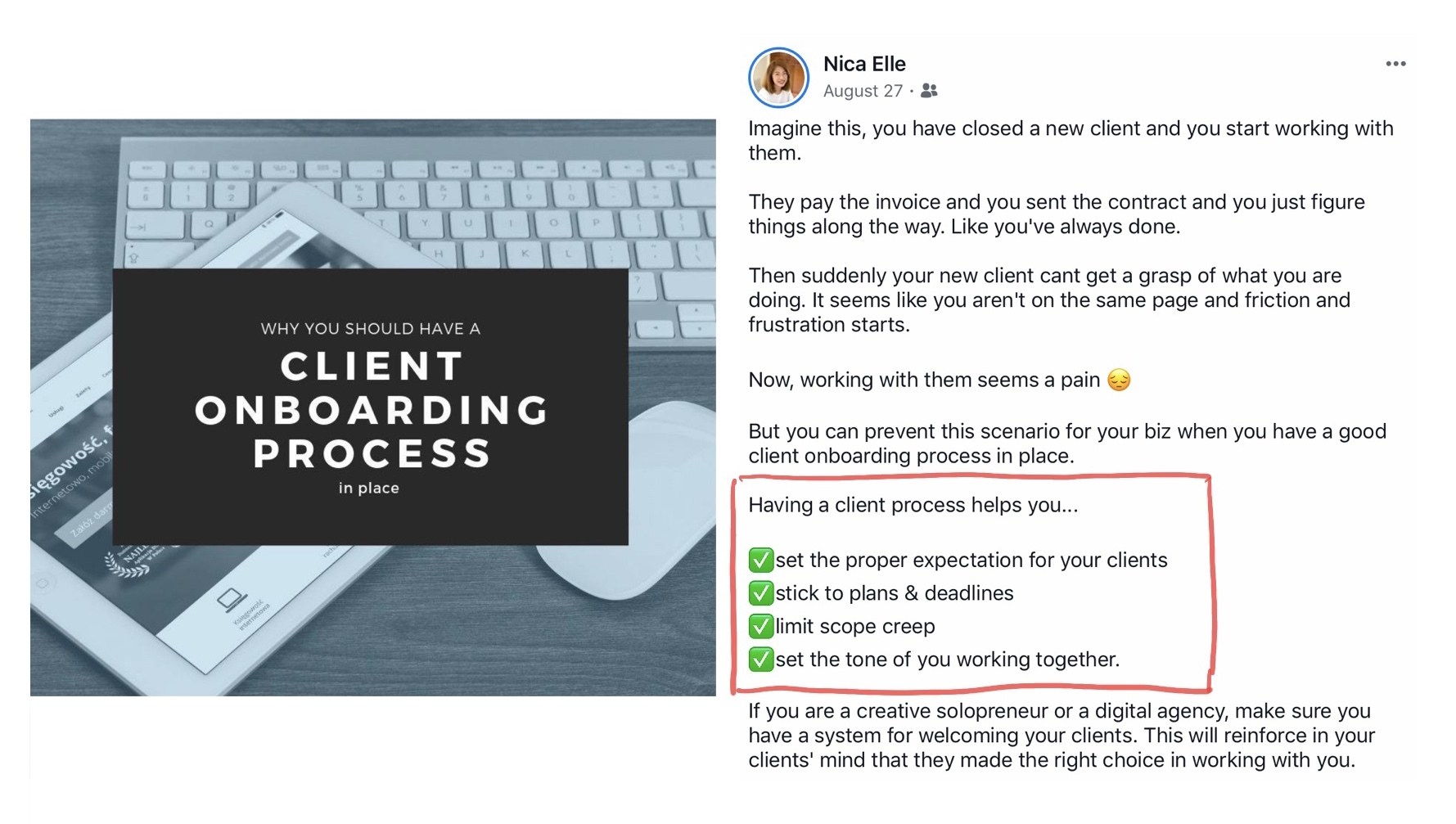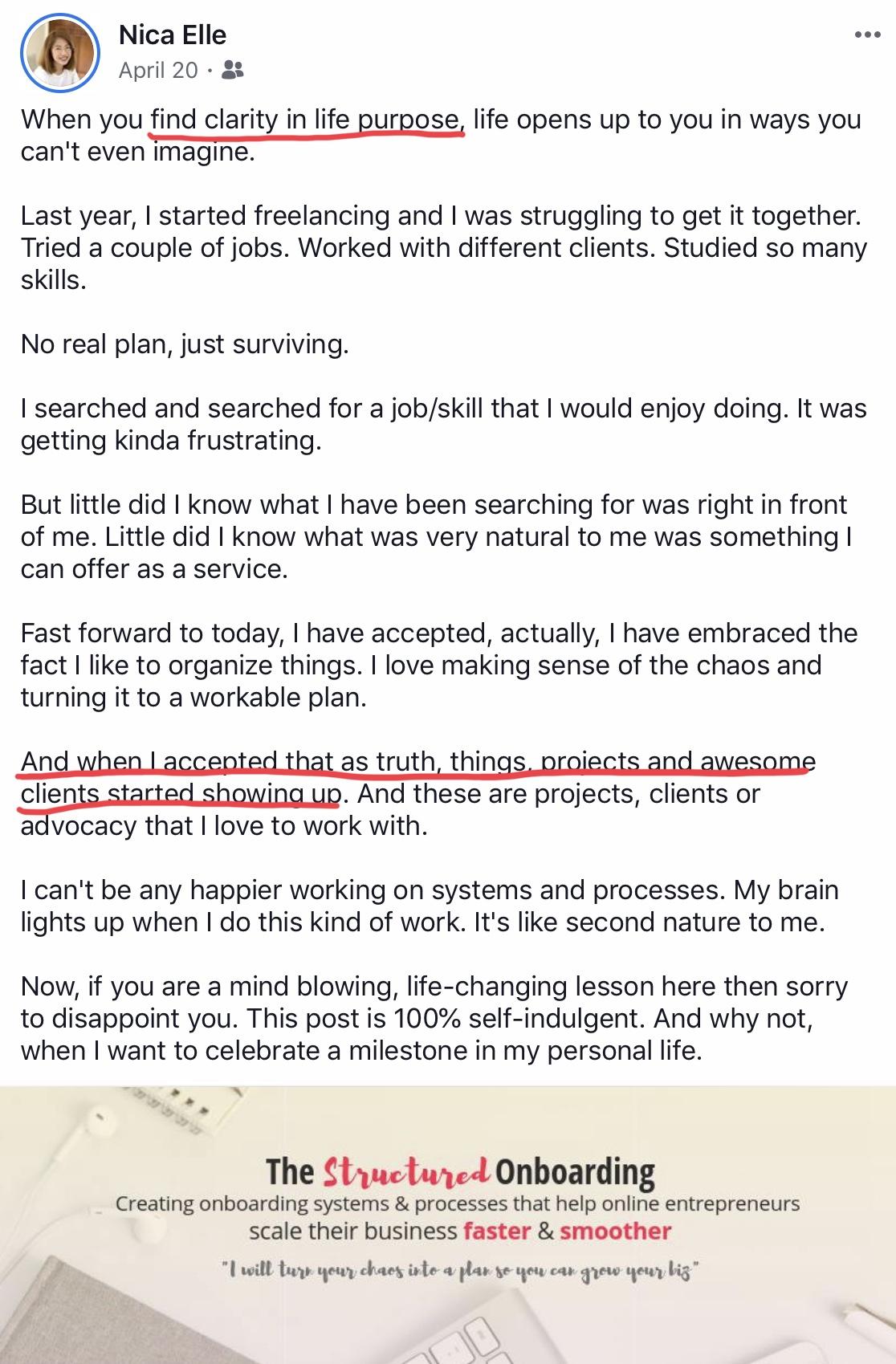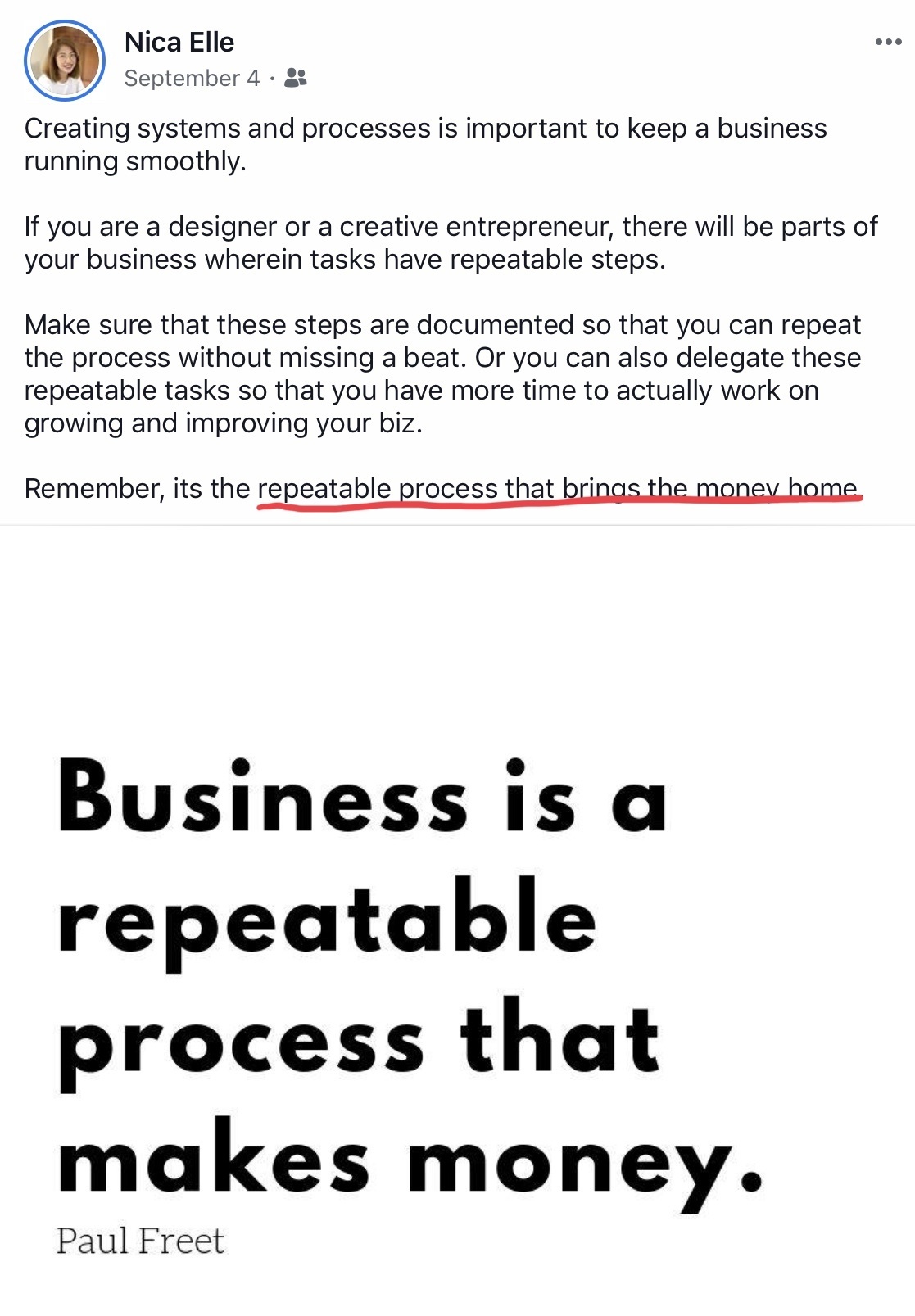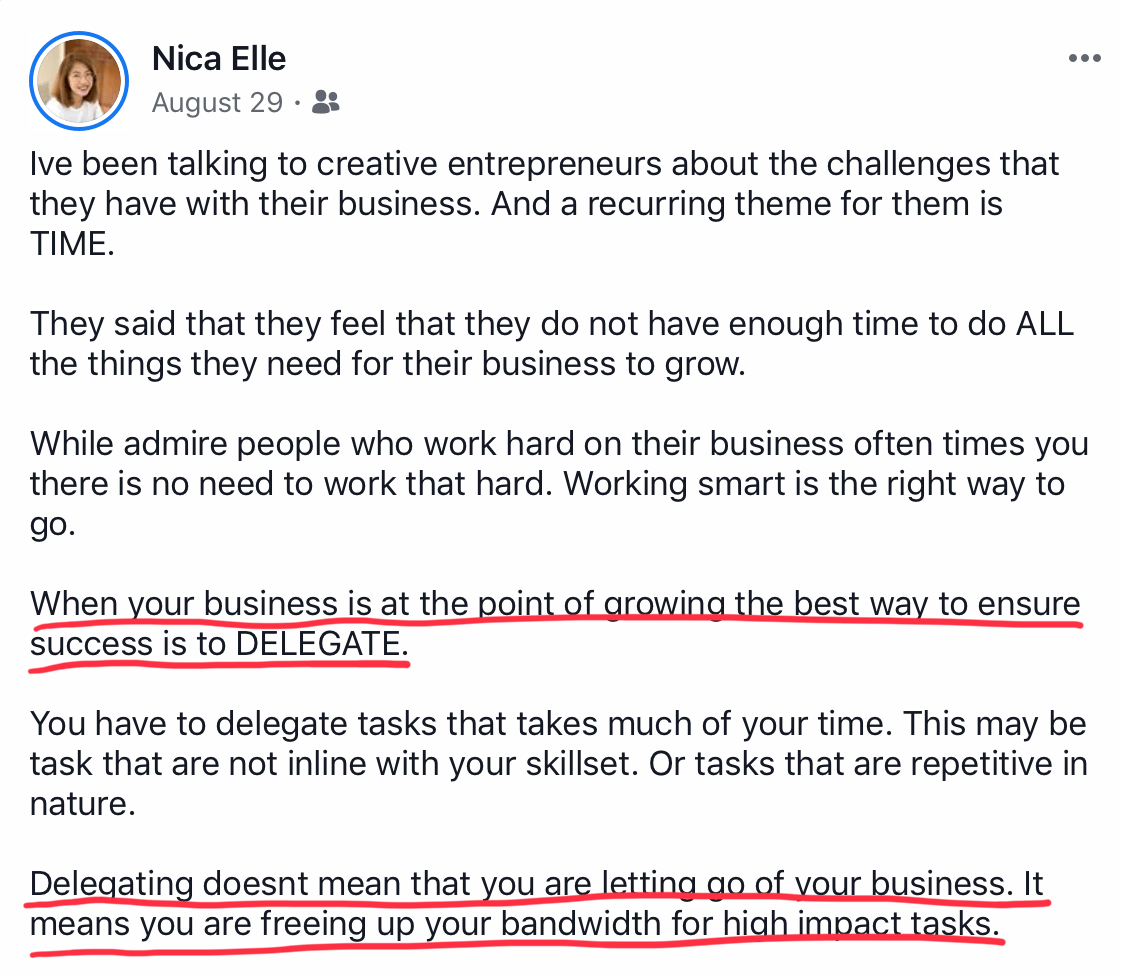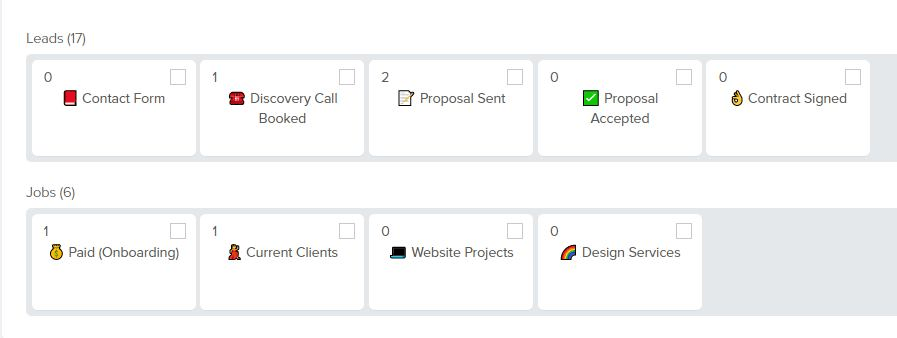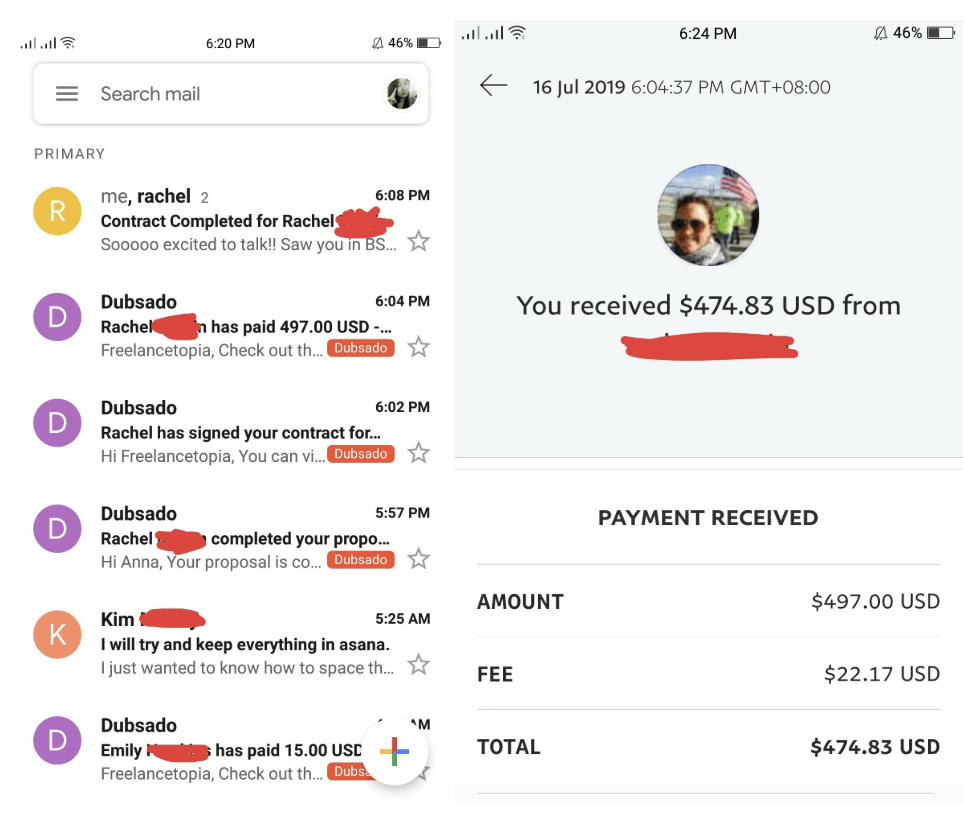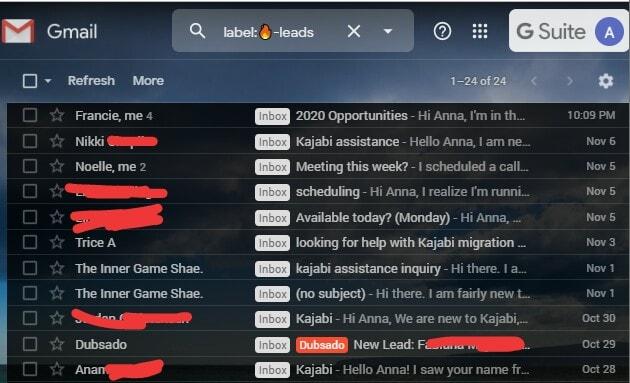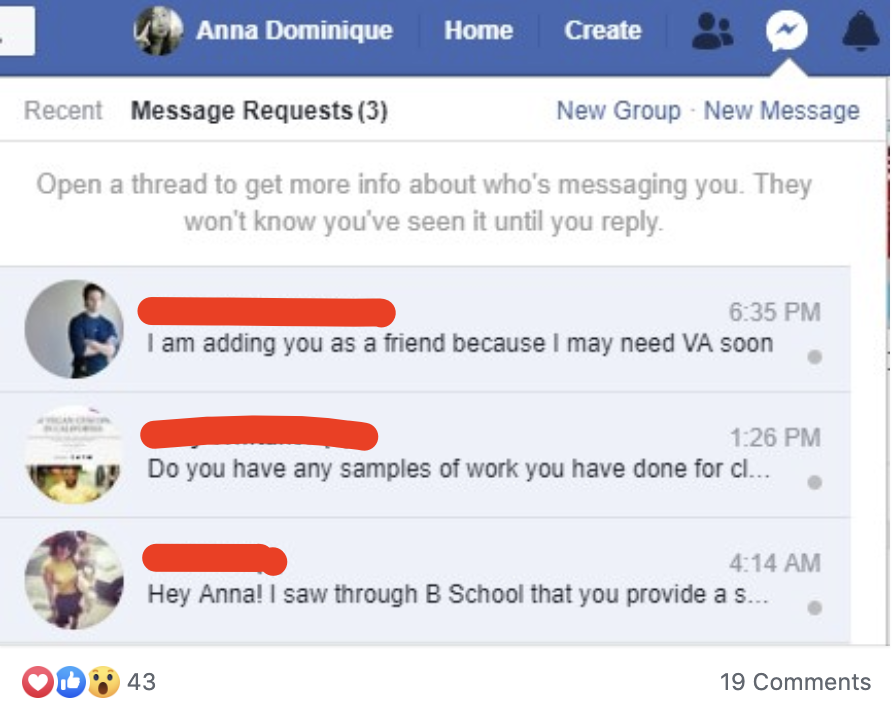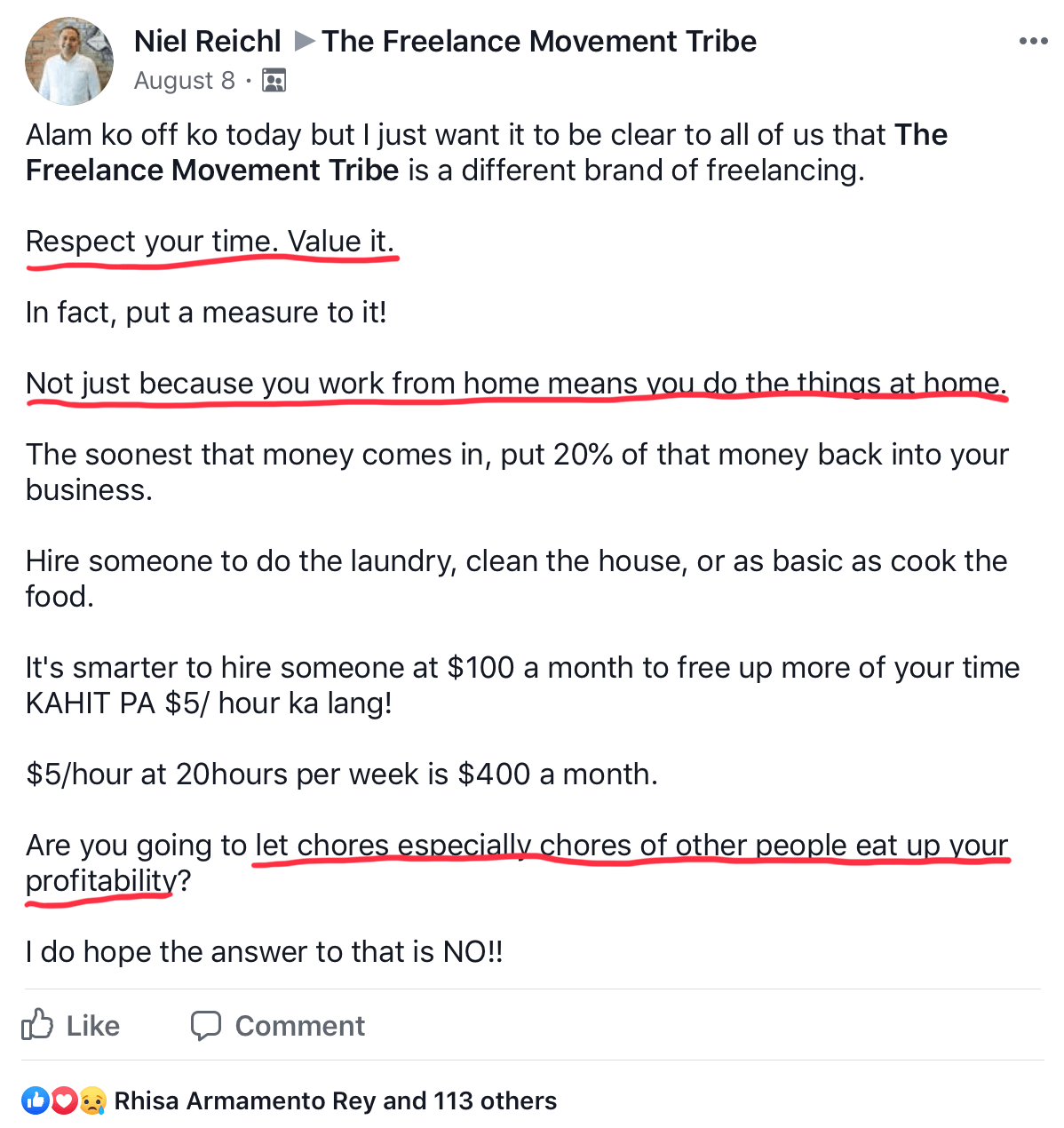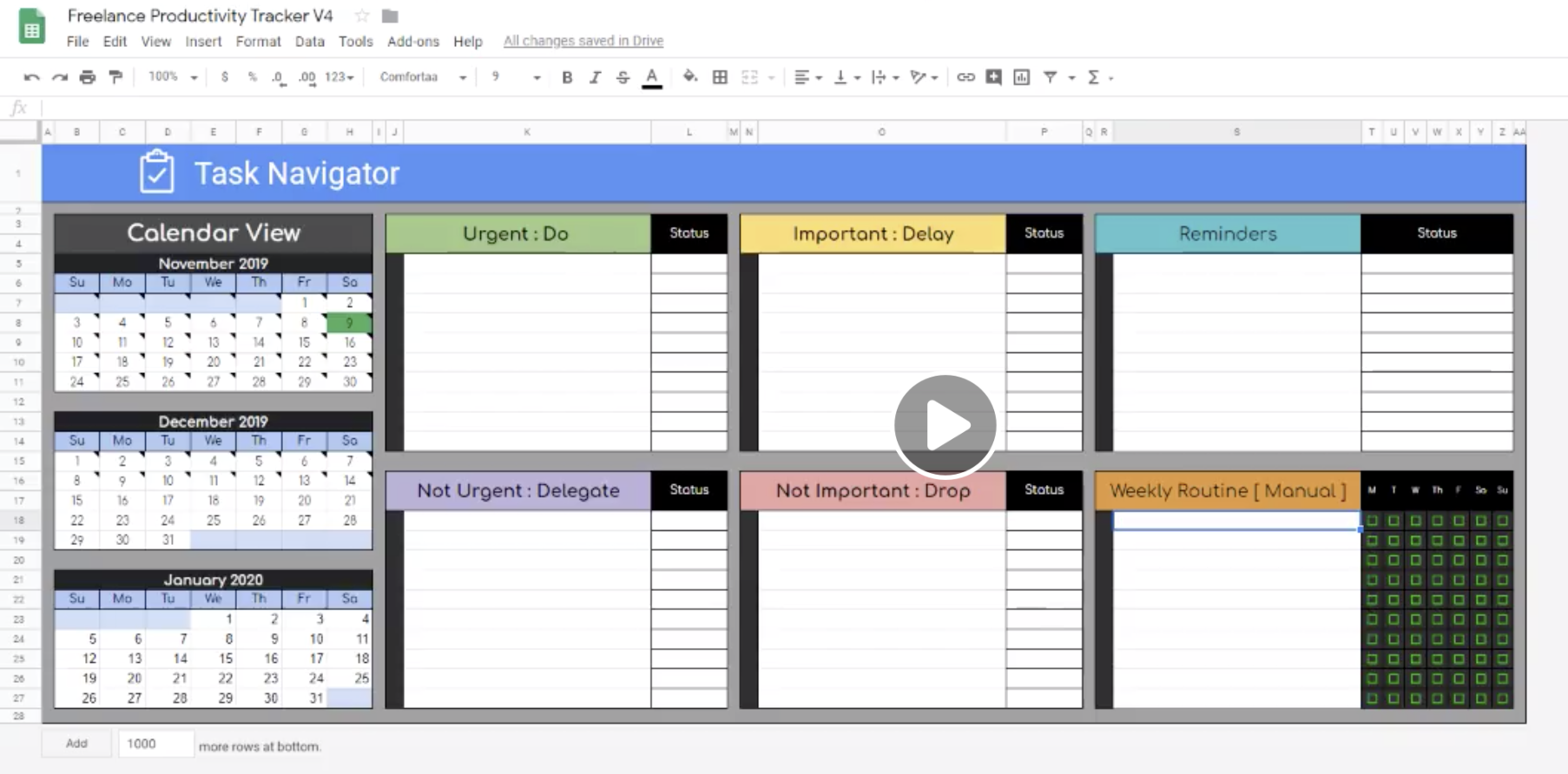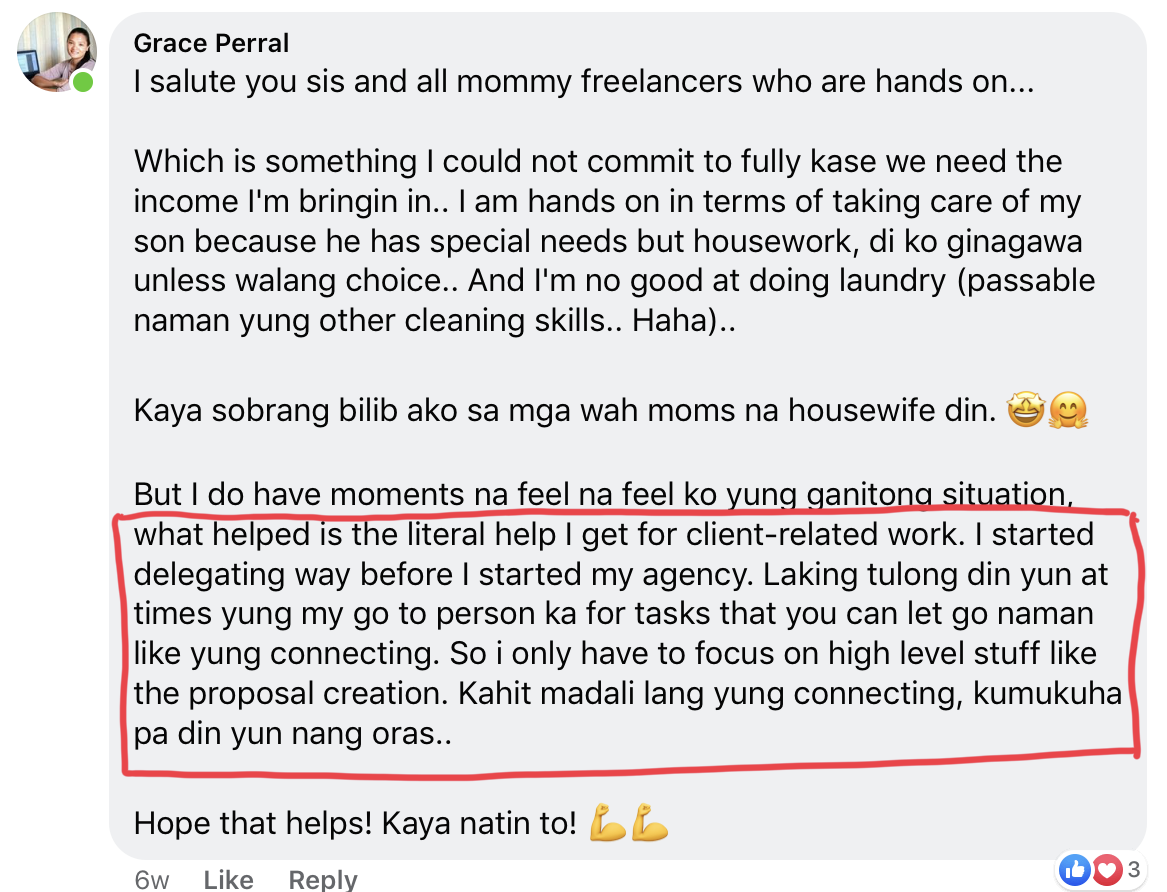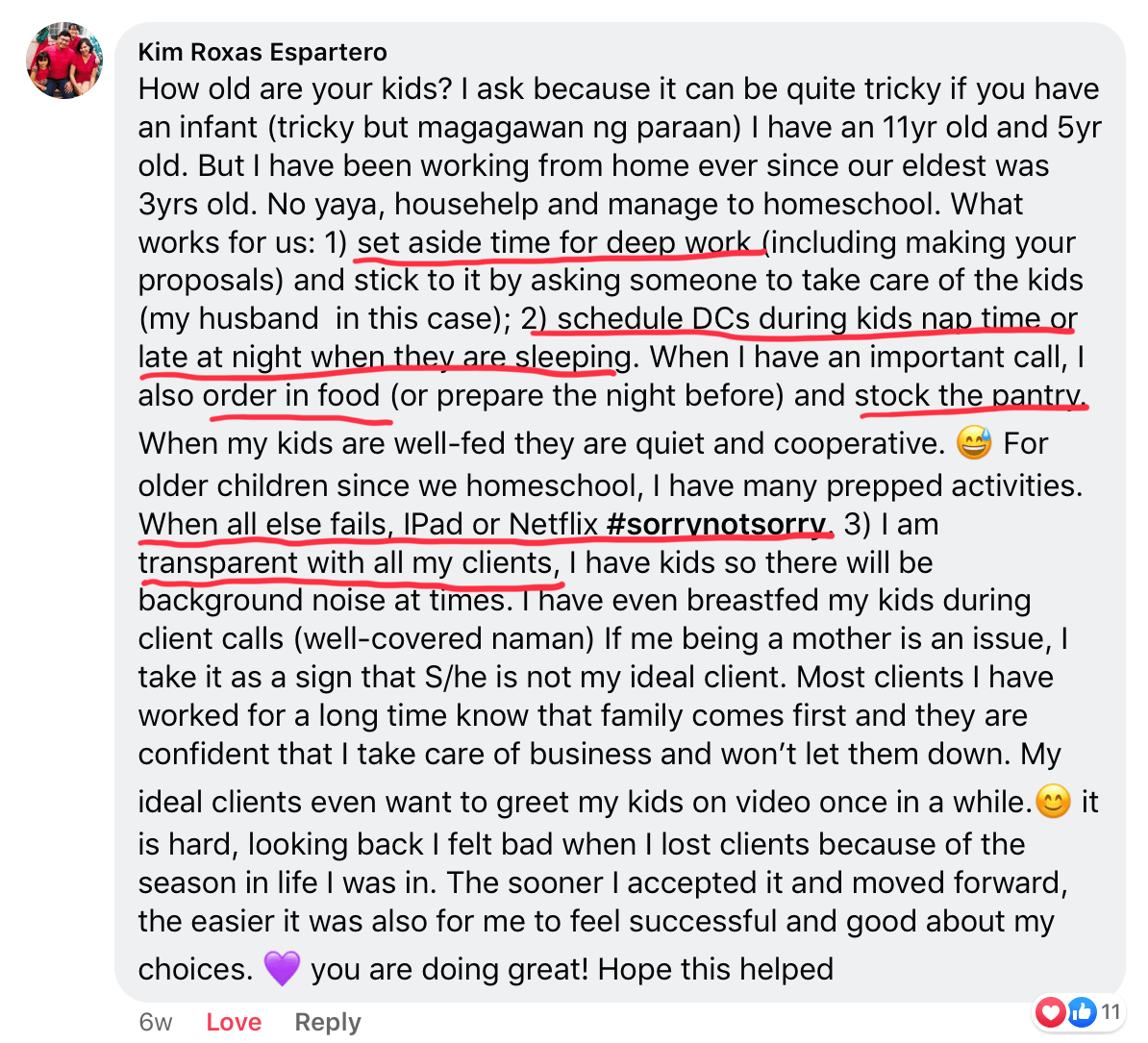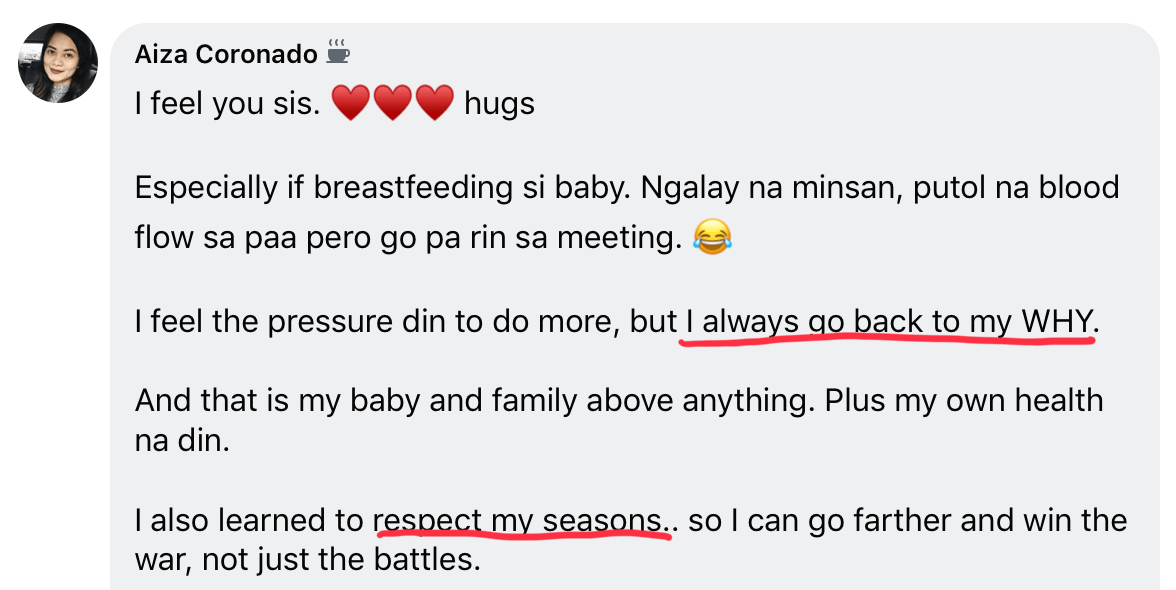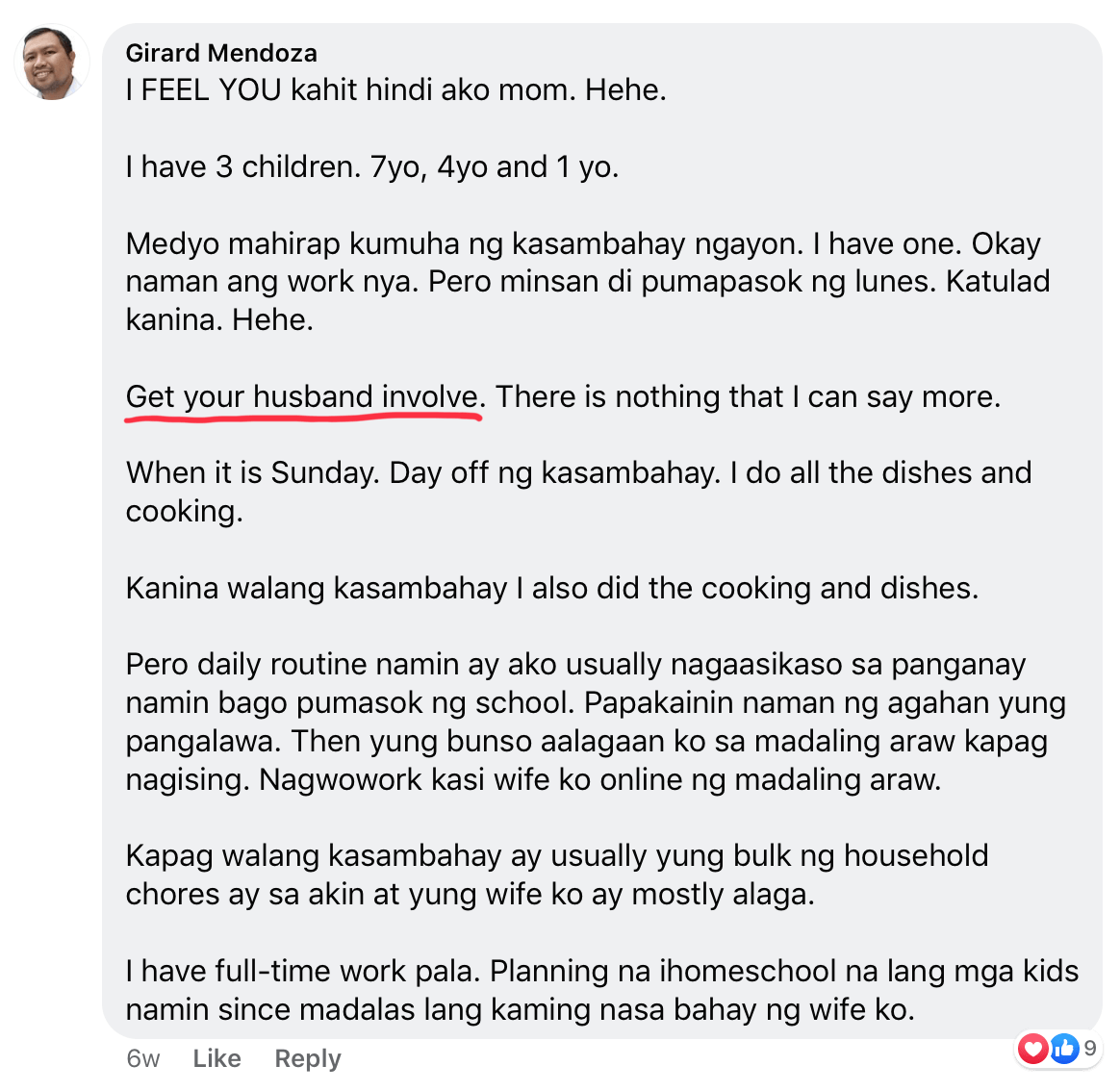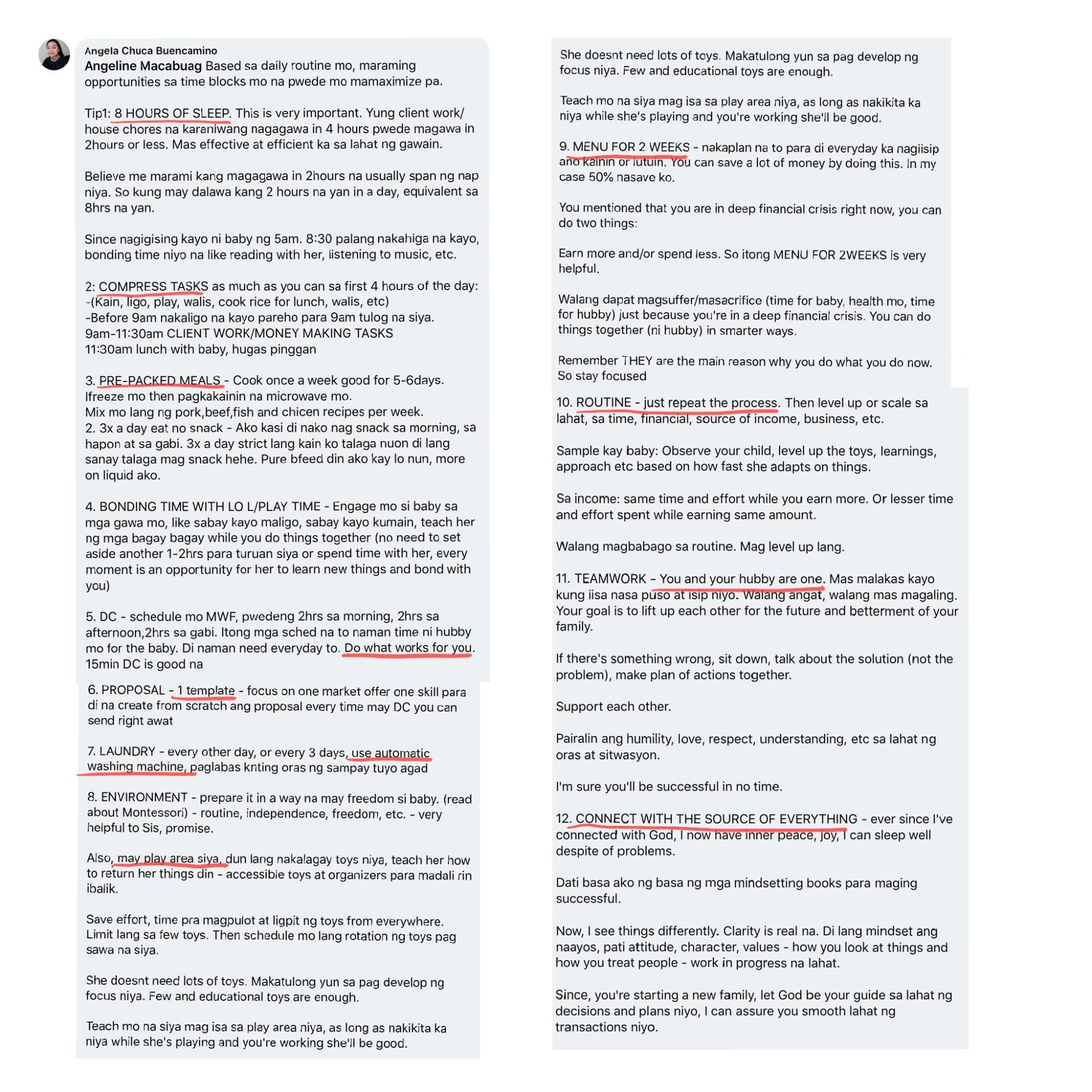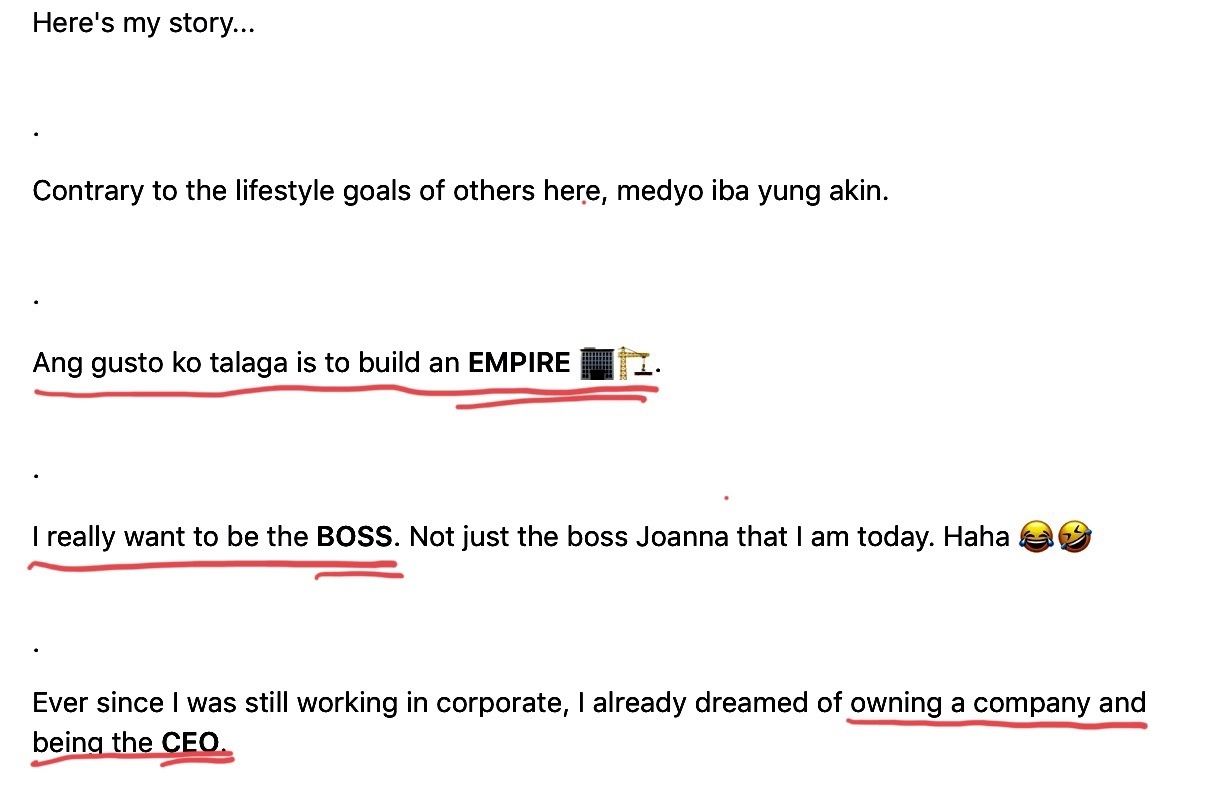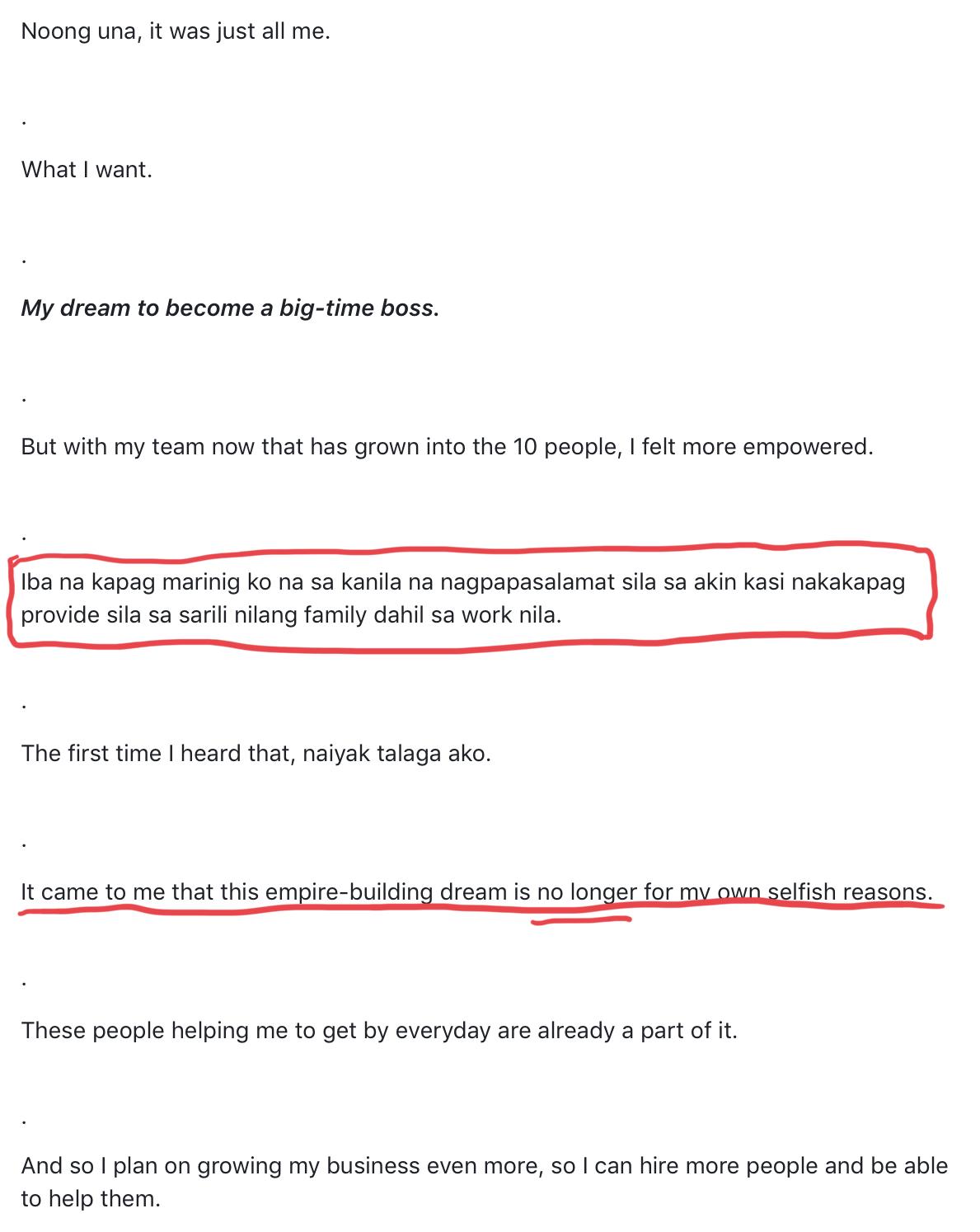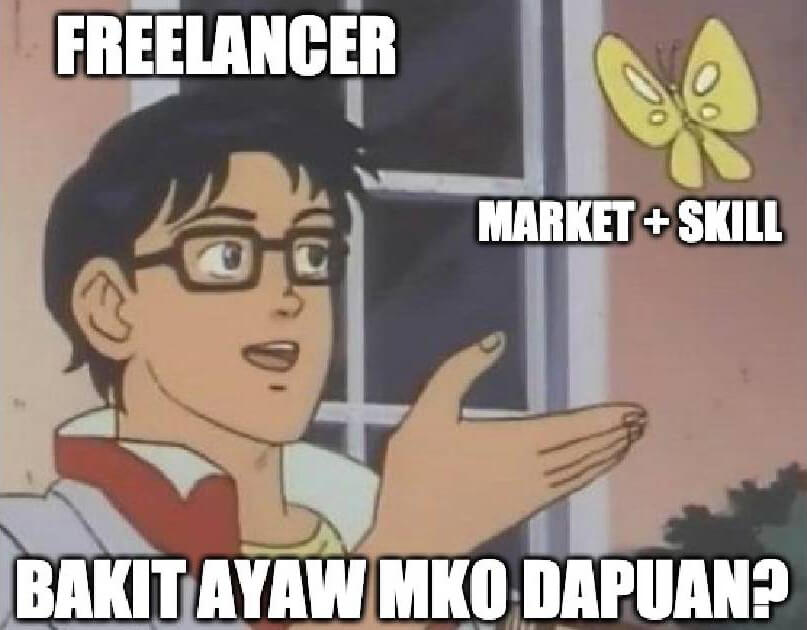Freelancers can earn an average annual income of $60,000 to $80,000.[*]The top freelancers can even make as high as over $100,000 annually.[*]As to why global companies shell out such huge money for independent contractors, Stephane Kasriel, CEO of Upwork, said,
As technology and skills evolve more rapidly than ever and the labor market remains tight, businesses are increasingly turning to independent professionals to find the talent they need.
Freelancing is indeed a lucrative business.
But just like any other business, it takes a great deal of effort, discipline, and time to grow your freelancing career. Unfortunately, for some, it means pushing their limits and spending over 50, even 60 hours a week.[*]
According to Content Work Freelance Writer’s Survey 2018, It is usually the high earners—those who gets paid over $45 an hour—who tend to work more.[*]
But here’s the thing.
You can choose to work for only 3-4 hours a day and get the same—heck, even more—income.
As to how to do it, let’s see how the 6 strategies freelancers use to get paid more while doing less:
[Strategy # 1] Get commissions to earn passively
One really good month, Michael Cariaga got paid $9,500 doing YouTube Ads for less than 2 hours a day.
Here’s how it works
When you charge clients commissions, you get paid with a certain percentage of the sales that you can generate on top of the upfront fee that you charge.
One pricing strategy from the TRIBE is to charge a low upfront fee plus a percentage of the revenues.
Here’s how Michael’s deal with his client who offers Trading Courses look like:
Deal: $3,000 fee for the setup + $1,500 monthly retainer + 10% sales commissions
The $3,000 is the fee for the initial set up of the ads and the funnel. The $1,500 is the monthly retainer for all the maintenance and optimization tasks. 10% is the sales commissions.
The way he worked before charging commissions
Michael recalls, “Before, I would get stressed out on work. Knowing that my income is directly proportional to the number of hours I work.”
He even had a client who’s paying him $6 for an hour.
What sparked the change of strategy?
He simply has clarity on what he wants, “Even from the start I have understood that my goal is to have time and financial freedom.
I understood that the way for me to have both is to do monthly retainer plus commissions.”
But there’s the looming thought behind his head.
Charging commissions has its challenges…
One, it can paint you as somebody who is just trying to squeeze out more money from clients. Michael explains, “The client might take it negatively and may not agree with it. You can lose the project.”
Two, you may inject efforts that could be potentially unrewarded. He said, “What if I won’t be able to get results?”
But it’s all counterintuitive.
Charging commissions is actually a win-win for you and your client.
As Michael put it here:
How did charging commissions change the way he does freelancing?
He has been freelancing for 3 years, but it wasn’t until his second year when he started this commission model.
Doing this has more than doubled his freelancing income and he now earns an average of $4,500 monthly.
Quick Trivia: Michael didn’t know how to do YouTube Ads when he first landed this client.
He then shared the things that he did on the proposal inside the TRIBE.
In the TRIBE, we believe that your ability to close a client has nothing to do with your skills, experience, credential or portfolio.
His advice to freelancers who’d like to scale up
Michael says, “Just remember that the primary reason we switch to freelancing is to get time and financial freedom.
And the better way to get both is if you work smarter rather than working hard.”
What’s next for his freelancing career?
If Michael learned anything from his first commission-based deal, it’s this.
You can only reap commission rewards if you partner with a client who already has the assets, the potential, and the audience.
If you go for a commission-based model with a client who’s just starting out—no validated offer, no potential customers, and zero sales…
Then, you may end up getting less for the hard work that you do.
Or worse, you may end up with a damaged reputation.
Because what if it doesn’t work out?
So here is how Michael plans to move forward:
The takeaway: Your success as a freelancer has a lot to do on the clients you work with. When charging commissions, you will want to pick clients who are already 90% there. If not, you’ll be risking your reputation, wasting your efforts, and getting meager pay in return.
[Strategy # 2] Just charge more
Mamu, who almost gave up on finding her first premium client after 11 months of trying, got her first breakthrough when she decided to just charge more.
Here’s how it works
Charge more.
It’s obvious but it’s the fastest way to work less.
From getting paid for the hours she worked, Mamu shifted to a fixed price per project and got paid $1,500 for an ebook.
The way she worked before charging more
For the entire 7 years of her career, Mamu works by the hour.
She recalls, “I had to take my laptop with me wherever I went—freelancing events, family affairs, vacations; because I had to log into my time tracker!
No hours, no income. So it was just like being another office worker. The only difference was that I can work wherever there's internet, but I had to track time just the same.”
What sparked the change of strategy?
It came after she decided to leave the TRIBE.
Here’s what happened.
Mamu retells, “I started applying the strategy 11 months into the TRIBE. Prior to that, I wanted to give up. I decided that the TRIBE is not for me. That I won’t be able to land a premium contract.”
Mamu was eaten up by all the negative thoughts at that point because she is not seeing the promised premium client…
"I'm not good enough." "I don't know how to do this." "I'm too old to learn this stuff."
In case you didn’t know, Mamu is already in her 50’s, a grandmom, and is fondly known as the “The Youthful Granny”.
Feeling defeated, she wanted to quit the TRIBE,
“So I logged into my Paypal account and canceled my automatic payment to the tribe. Then, as a courtesy, I informed Coach Carlo Mercado of our tribe, Credo, of my decision. He said, ‘You still have a month, Mamu, give it another try. Just don't give up.’”
She took that chance.
What did Mamu do in that 1 month?
Mamu enumerates the exact steps that she has taken during that period.
1. Change all her online profiles.
That alone raised awareness for the services she offers: ebook and white paper writing
2. Connect with her target market.
Initially, she was the one doing this task. Every single day, she would connect with every health and wellness gadget creator and seller that she can find online.
Here’s her tip:
“Don't think of connecting as a means to get clients, but as a means to build your authority. With your connection list teeming with people in your desired niche (in my case, health and wellness), you are showing people that you are into that industry.”
Now, her firstborn is the one doing this for her.
3. She simply charged more.
After connecting, she would send proposals with fixed-price investments that makes her happy.
And guess what.
She met her first client who will happily pay her asking price.
How did charging more change the way she does freelancing?
Mamu confesses, “It was difficult to raise my rates at first. I had the scarcity mindset.”
She’s not alone in this one.
Pia Silva, a creative business coach, explains the challenges of charging more as a freelancer:[*]
“Here’s an unfortunate truth: You’re not worth more than you’re getting paid right now. But you can change that by identifying why you aren’t charging more, and taking steps to do something about it. The question is, do you have the guts to do it?”
Mamu continues, “But applying all the TRIBE’s core lessons, that scarcity mindset transformed into a “take it or leave it” mindset.
Eh ito ang gusto kong rate, eh. Tapos!”
After winning her first premium client…
…she stopped being the other family member who always sat in front of her laptop while the rest of the family are enjoying.
…she stopped being the laptop-bearing and time-tracker conscious 50-ish woman at parties.
…she stopped bringing the laptop out of the house and she can finally truly enjoy family vacations, social events, and freelancer meetups.
She says, “Now I can claim that I am a full-fledged freelancer! I now have the option to work anytime, anywhere, or NOT at all.”
Her advice to freelancers who’d like to scale up
With 7 years spent in freelancing after she retired as a private school teacher, Mamu has the wisdom to share which all boils down to these:
“Rethink your strategy. Change your mindset. Start believing that you deserve a higher rate and a better lifestyle. That's how you scale.”
However, these are the very things that are difficult to overcome alone.
That’s why she recommends finding your community…
As for her, it’s The Freelance Movement Tribe, whose “power lies not in the core lessons, not in the videos, nor other resource materials, but in its people, from John to the coaches to the members.
You’ll be healed by the words of encouragement, the eagerness of everyone to answer your questions, and the general “let-me-lift-you-up” atmosphere.”
What’s next for Mamu’s freelancing career?
The next goal for Mamu is establishing her very own writing agency.
As much as possible, she wants to hire writers in the 40 years and above age group as a way to help the people in my Facebook group, Freelancing for the Young Once.
And with her rallying this segment of the freelancing workforce, it’s not impossible for this dream to become a reality soon.
The takeaway: Sometimes, the thing that’s holding us back in freelancing (and in life) is just ourselves. Nobody is stopping you from charging more but YOU.
And more often than not, you need other people’s support to get over yourself.
[Strategy # 3] Outsource parts of your projects
Outsourcing has allowed Harry, a Marketing Consultant and Project Manager, to 3x his freelancing income.
Here’s how it works
Outsourcing is the business practice of hiring a party outside a company (or your core team) to perform certain services or create goods.
For Harry, he hired other people on a project basis to help him reach the different milestones of the marketing campaign he was spearheading.
This helped him close a deal worth Php 3.2M for his full marketing service.
The way he worked before charging more
Harry’s decision of outsourcing was more like an action to a call of challenge rather than a solution to freelancing problems.
Stepping up was a natural tendency for this stubborn guy who craves challenges.
What sparked the change of strategy?
It was the Los Angeles-based ad agency Harry used to work for that inspired him to outsource.
Having first-hand experience of the agency’s ups and downs, he felt excited and challenged to pull the same thing off.
He adds, “The combo of those strategies was simply what I saw as a way to scale and get a bigger Christmas bonus. Haha.”
See, outsourcing was just a part of Harry’s strategy. He was generous enough to share the rest:
- Referral System: Clients usually come from referrals that he already knows. He gives 5% to 15% of commissions if he closes a client project that referrals connect him to.
- Finding Right Client Fit: The project starts with an introduction, followed by a series of meetings. This is where Harry checks the prospects if they meet his criteria.
- Building a Solid Team: After identifying the project needs, he and his team find the right people who can get the job done.
The outsourcing comes after this.
How did outsourcing change the way he does freelancing?
By this time, Harry already has 4 business partners in the marketing agency and all are reliable experts.
But he has to admit. The outsourcing part can really be terrible.
“I switched a few team members during the project due to incapacity to meet both project and my personal work ethic expectations. PAHIRAPAN PA SA REFUND coz there was one video guy, paid 50% upfront who did not want to give the file copies of what he was paid for dahil expected niya kanya daw yung project until the last event date. Naoffend kasi na fire siya. I would have given him the whole project and beyond if only he delivered according to his promise.”
Of course, it was worth it.
He was grateful for the joy in providing opportunities for others to earn and create an impact.
He was grateful for the chance of growing in people management.
He was grateful for the challenge of generating optimal client results by bringing out the best in his team.
His advice to freelancers who’d like to scale up
As somebody who has been doing vision casting, goal-setting, and consistent huddles with a team for the past 21 months, Harry would like to say this,
“There are people in your circle that have untapped potential to help you grow your business be it as part of your team or as someone who can connect you to clients. My advice is to really get out there and provide them with valuable opportunities to work with you. You never know the possibilities!”
What’s next for Harry’s freelancing career?
Harry sets a goal that advances towards self-actualization.
“For the next 5 years, this is the planned outline. I have decided to niche down a little bit more and focus on a trending smaller market with bigger funding and income potential. I am tying this up with personal brand advocacy, doing my best to penetrate and build authority within the sphere.”
The takeaway: If you want to do bigger freelancing projects, you don’t have to do everything yourself. You can’t. You shouldn’t.
Leverage the people around you. See your fellow freelancers as an ally rather than competition. Let go and have the work done by other people whom you know can do it—and do it better.
[Strategy # 4] Create systems for your business
Nicaelle was able to 3x her monthly freelancing income when she created an onboarding system for her clients.
Here’s how it works
An onboarding process is a system for welcoming new clients to your business so you both can get up to speed and start working effectively.
Nicaelle’s post will help you understand why it’s important for your business
But before you can create an onboarding system, there’s one important thing that you should have nailed down:
Clarity on your business
Because how can you repeat the same process if you offer a different set of projects for a variety of clients?
That’s why the first 2 steps in creating a profitable freelance business is to choose ONE market and figure out the ONE skill that you will offer clients.
The way she worked before charging more
“Last year, I started freelancing and I was struggling to get it together. Tried a couple of jobs. Worked with different clients. Studied so many skills. No real plan, just surviving. I searched and searched for a job/skill that I would enjoy doing. It was getting kinda frustrating.”
She’s just too frustrated that she doesn’t have results yet…
Results that she know she CAN achieve.
Like everyone, Nica was obsessed with finding the perfect high-paying skill so they can make more money.
What sparked the change of strategy?
It was when she told Dina, a fellow TRIBE member that she’s lost.
Dina told her to stop romanticizing being lost—it just fuels her decision to NOT move.
She described that talk as “sampal talaga sa mukha” (slap on the face).
After that, she talked to another TRIBE member, Jozelle who helped her gaining clarity on her freelancing career.
How did creating onboarding systems change the way she does freelancing?
Before she feels like she’s just a “regular freelancer”…
“Yun nalipat lang sa bahay yung work, but still felt like ‘work’”...
Now, it’s different.
“Ngayon, I have more freedom to do and work as I please.”
Thanks to onboarding, Nica’s business is running smoothly.
Her advice to freelancers who’d like to scale up
“If you want to scale, make sure na ready ka na mag-delegate ng trabaho. Na hindi ka super attached sa work itself na you will micro manage.
Next is that there will never be a perfect time that you will be completely ready. so just go for it and be ready to fail and learn along the way.”
What’s next for Nicaelle’s freelancing career?
“Well, I want to learn more sa chosen skill ko. Not because I want to be all knowing pero sabi nga ni John, you just have to know how you can help them enough na may malaking impact sa business nila. Kung baga work smarter lang. And I think I know I can work smarter by gaining knowledge, experience and being ready to fail.”
Onboarding is one of these processes—it’s just one of the freelancing systems.
The takeaway: Freelancing is a business and business should be a repeatable process that makes you more money.
To create repeatable processes, you have to automate, delegate, or do a combination of both.
Because of systems, Anna has been able to receive 9 inbound leads in 10 days while on vacation—and hit her target monthly income while working her ideal number of hours.
Here’s how it works
With Anna’s system, she gets money deposited into her account without lifting a finger.
“Nasaktan. Bumangon. Nakakuha ng client.😍 Major major winning moment. I acquired a new client without lifting a finger. Thank you sa Dubsado at sa onboarding process ni Nicaelle! Di pa super pulido ni process, pero ito working sya!🎉 Nagbunga din yung hard work ko sa website! I made my website live last Friday without the hype na kasi super long overdue na & in a way affected pa rin ako ng negativity from a flop discovery call. Progress not perfection, so I just let it go.✨ Eto na nga... Nagulat na lang ako may sunod sunod na email from Dubsado. PROPOSAL > CONTRACT > PAID > STRATEGY CALL❤
It’s the good old CCPP process—only automated.
The way she worked before charging more
“I was an overworked general VA na walang clarity NOON”, Anna starts her story.
What sparked the change of strategy?
It all changed when she got invited by the #SysytemsCatalyst Tisya Pasag to be part of the Systophia Team.
Tisya is the First Certified Online Business Manager in the Philippines yan and she has over 10 years experience in handling an agency.
How did creating onboarding systems change the way she does freelancing?
Prospects are flocking over her.
Weekly, her inbox looks like this:
And her Facebook Message Requests like this:
Anna describes it this way,
“I received 9 inbound leads for the span of 10 days while we're staying in the hotel doing volunteer work, 2 of this is so close to being close kasi referral sila from my current client. I'm shocked din na when I sent invoice for my retainer clients, it was already my target monthly earnings and it just needs 40 hours of work. I was able to hit my target monthly earning + target hours of work last October and hit it again this month, that's 5 months inside the tribe. I'm more than happy and content with this so I had to say no with other clients or partnership opportunities na nakakastress.🔥”
And just like Nicaelle, systems will only work if you found CLARITY.
Anna stresses it out: “Don’t underestimate the power of clarity.
You’ll attract the right client and people when you’re clear on your what and why.”
Her advice to freelancers who’d like to scale up
She has these 5 things to say:
“This sounds like sirang plaka pero just a reminder. 💥 Be clear on your BIGGEST WHY & END GOAL, it helps combats burnout or depression. 💥 Stop comparing yourself with others, we have different paths. 💥 Make sure of the most important thing, and no it's not about business & money. 💥 More sacrifice, more happiness. 💥 Being content means being happy.”
What’s next for Anna’s freelancing career?
Believe it or not, Anna wants to do freelancing part-time only.
Because her BIGGEST WHY is this:
“To support my husband doing full-time volunteering work.”
And she started homeschooling her toddler too, so she’s quite busy and can only do freelancing part-time.
The takeaway: Freelancing is a business and a business should be a repeatable process that makes you more money.
For freelancers, these processes mean having a website that attracts the right clients, an onboarding system that catalyzes the project start, and a “booked to paid” automation that gets you paid even before you work (or before you even know somebody hired you!)
[Strategy # 5] Figure out how to tick your productivity
TRIBE members are masters at getting the work done—despite the usual home setbacks.
Think of crying babies, house chores that pile up, and responsibilities that don’t wait for the clock to hit 5 pm.
Here are a few of the strategies that stood out.
Niel Reichl, one of the TRIBE’s coaches who has turned his coachee’s monthly income from $4700 to $16,000 in less than 90 days, urges everyone to value their time.
His actionable advice?
Put 20% of the money that comes back into business…
Since freelancers work at home, this means hiring someone to do the laundry, clean the house, and cook the food.
Harry has a customized productivity tracker tailored for freelancers.
At its core, it’s an Excel Sheet-based tracker that automatically categorizes your tasks as Urgent, Important, Not Urgent, and Not Important.
It’s based on the Prioritization Matrix, which is a useful technique to identity which tasks or projects you should work on first, which to delegate, and which to cancel.
Here’s Harry’s “4-Layered Why” as to why he created this productivity tracker.
1. Personal – I was bored and had too much time while waiting for the onboarding of my big client which will be my focus for the next 12 months. Onboarding namin later today.
2. Coachees – I wanted to improve the tracking of activities for my coachees for better accountability.
3. Agency – I wanted to try new ways in having a more organized approach to our team efforts on projects and I eventually want to dive into creating related softwares for my clients within 20 months from now.
He asked the fourth reason to remain a secret—he’s brewing something up for the TRIBE. 😉
Work-at-home moms (and dads) bonded and share how they cope with everyday struggles at home/work
It was a Facebook thread that picked up a lot of attention because it has struck a lot of chords.
Sharing their techniques that help them with their productivity at home.
..delegating the “connecting” part of the client acquisition process
…informing would-be clients of their situations first hand so they would understand and be aware
…stocking the pantry, ordering food in, and handing in the iPad (yes) to make the kids cooperative
…AND being kinder to themselves by respecting the season that they’re in right now
Even work-at-home dads gave some strategies on how to nail freelancing and still be a hands-on dad.
And Angela, being the supermom that she is, gave ALL her tips away.
The takeaway: Productivity can be improved through techniques, hacks, and strategies that you’d learn every now and then.
But we’re all different.
What would work for a morning person will not work for the night owl. We’re all in different situations, in different environments, and in different phases of our lives.
So don’t be too consumed with finding the perfect tool, strategy or gadget—try a few, stick with what works for you.
[Strategy #6] Clone yourself by building a team
Joanna realizes that if she wants to build an EMPIRE, she can’t do it alone.
Now, she is simultaneously handling huge freelance projects—and averaging $8,000 a month—with 10 people behind her.
Here’s how it works
You just find people who will be a part of your team and work with you.
Unlike outsourcing where you get third-party contractors to work with on a per-project basis, building a team means that you have people who will consistently work with you, day in and day out.
And since it’s like being a small company with employees…
…you may have to pay them a monthly salary
…you will be pressured to consistently provide them with projects
…and in the process, you will be partly responsible for helping them provide for their families.
This is where the heaviness of having your own team lies…
…knowing that you’re no longer doing this for you, but for your team members, and their families as well.
The way she worked before charging more
In the first 3 years that Joanna has been freelancing, she was struggling to get to a 6-figure income.
She recalls, “I need to work 16 hours or more a day, 7 days a week”.
What sparked the change of strategy?
It’s simple.
Joanna really wanted to go BIG and earn more.
Then it came to a point when she started outsourcing work.
That was the first step in building her own team.
The biggest challenge for Joanna in building a team is choosing the right people to hire.
When faced with a potential new team member, she always asks herself this, “Can he/she deliver or perform the quality of work that I would like as if I’m doing it myself?”
The quality of work is her team’s number 1 core value—it cannot be compromised.
And her clients being mostly referrals and repeat clients is enough proof that she has continued to uphold this.
How did building a team change the way she does freelancing?
“It’s a BIG difference.”, Joanna started.
Now that she has a team, she focuses more on doing the CCPP processsans the last “P” which is the Proposal.
Joanna doesn’t send a proposal—she closes the clients on the call.
“When I implemented the strategy I earned MORE with LESS hours of work. We can even afford to go on a week-long vacation and not compromise our income.”
But in her journey, she realized that she’s no longer doing it for herself.
Her advice to freelancers who’d like to scale up
Handling BIG operations for your team is not easy.
For freelancers who don’t see themselves doing it yet, Joanna’s advice might be the push that you need:
“Duplicate yourself, start outsourcing or building your own team as soon as you earn some extra. Don't overthink things. Sometimes people tend to overthink and get scared of their big goals. It's ok to be scared but don't let yourself be eaten by it. Embrace your goal and keep moving forward.”
What’s next for Joanna’s freelancing career?
It turns out that Joanna is just getting started on building her empire.
To grow her business even more, she has these plans in place:
- Improve her systems, especially her client acquisition process
- Do ads next year to acquire new clients
- Have a training program for her team to improve their skills
The takeaway: With a team who can support you, you can work ON instead of IN your business. It lets you earn more, do less, and have stress-free vacations for as long as you like.
Building a team is the ultimate way of scaling your freelance business, but it takes commitment, hardwork, and pure dedication to make it work.
It’s time to grow your freelancing business
Now that you know that it’s possible to increase your freelancing income while decreasing your work hours, it’s time for you to take action.
Go ahead and take a stab at any of these scaling strategies:
- Charge commissions for every sale that you can make for your client. But remember to choose clients whose businesses have the assets, potential, and capital to succeed. Else, you’re just going to waste your—and your client’s—resources, efforts, and time.
- The fastest (and most obvious) way to making more freelancing income is to just charge more. But you there are 2 tricky things that you need to pull this off: (1) You need to believe that you deserve that rate. (2) You need to make the clients’ see the value that you can bring to their businesses.
- If you’re not ready to build a team yet, try to outsource your tasks little by little. You might not be aware of it, but you have people in your circle with untapped potential to help you grow your business.
- Freelancing is a business. And to scale a business, you need to skip the menial things and focus on high-impacting tasks. Having systems, process, and automation will help you scale seamlessly.
- Know how you can boost your productivity. There are a thousand distractions at home—and online—so it’s important that you work efficiently so you can get more work done in less time.
- Building a freelancing empire? You can’t do that alone. The ultimate way of building your freelancing business is to duplicate yourself by building a team.
Don’t overthink it, just do it.
Growing your freelancing business can be overwhelming, that’s why it helps if you have a supportive community who can help you do it. 😉
If you think you’re ready to be part of this community and get access to people who can help build your freelancing dreams, then…
